
Geologic Time Billions of Years of Life on Earth


Geologic Time Objectives:
- Define stratigraphy and explain how layers of rocks can provide information.
- Define geochronology, including what is used to date fossil rocks.
- Describe the types of fossils found in Oregon coastal areas, as well as the history of significant freshwater ecosystems.
Science is limited to observable phenomena, meaning there needs to be direct or indirect evidence that something has occurred. In the case of the distant past, far before human recorded history, layers of rock and the fossils they contain are the primary evidence of life.
Geologic time refers to Earth’s history recorded in crystals and rocks over billions of years.
Since humans were not alive for most of Earth’s 4.6 billion year history, different forms of indirect evidence have to be used to piece together early environmental conditions and forms of life.

Stratigraphy is a field in geology related to studying layers of rock, also called strata. Organic and inorganic materials deposit in layers over time, and stratigraphy explains these processes.

The deepest rock layers are generally the oldest. Earthquakes, floods, and glacial melt can fold and bend the Earth, leaving behind evidence of Earth’s major changes above and below water.
This geological park in Gansu province, China shows long swaths of time and mineral deposition.
Biostratigraphy uses fossils to determine the age range of rock layers. Certain species or groups of species only existed at one point in time, and their presence indicates that general time period. For example, the brachiopod shelled animal pictured existed approximately 350-415 mya (million years ago).


Geochronology is using radioactive isotope measurements to determine the age of sediments and the fossils they contain. Constant radioactive decay rates can be used to establish the age of source materials. There are now dozens of different isotopes used to determine age over different periods of time.
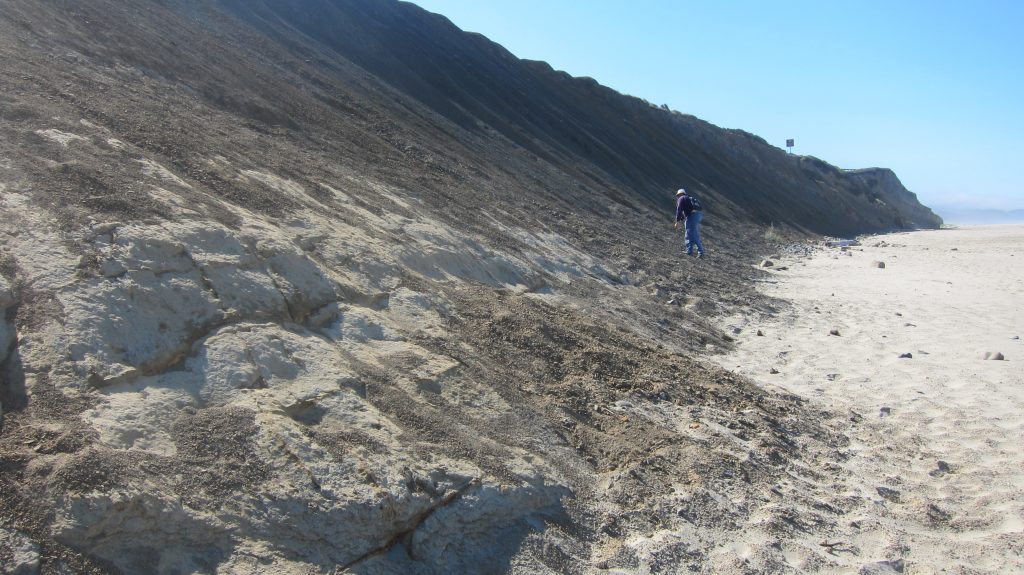
Let’s put this into a real-world application: finding fossils on a trip.
Just north of Newport, Oregon is Beverly Beach, a state park known for overnight camping and one of the easiest to access fossil beds we’ve ever visited.
The fossils are on an eroding cliffside under highway 101, and are continually exposed by wind, rain, and occasional high waves.
Note: always check to see if collecting is legal in a particular location and wear eye protection if extracting fossils from rock.
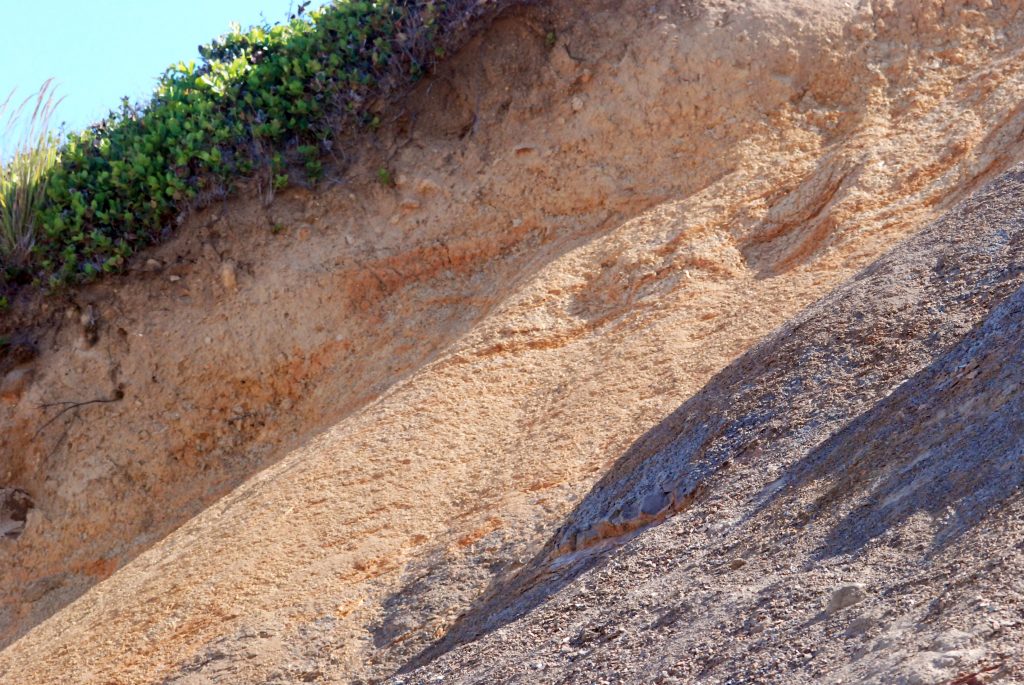
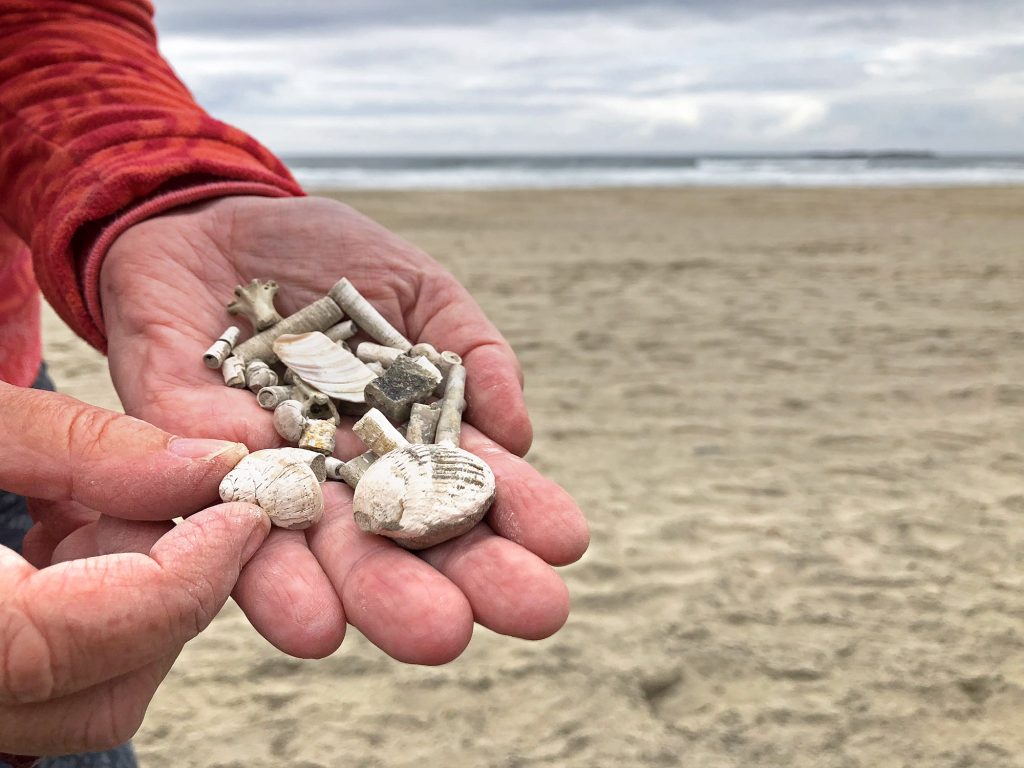
Stratigraphy and geochronology indicate that the formation dates to approximately 15 million years ago. This was ocean bottom, so there are fossilized mollusk shells, especially clams and snails.
These are fossils we found eroded off of the cliff face.
Since most organisms are microscopic, microfossils are an area of active research into the past.
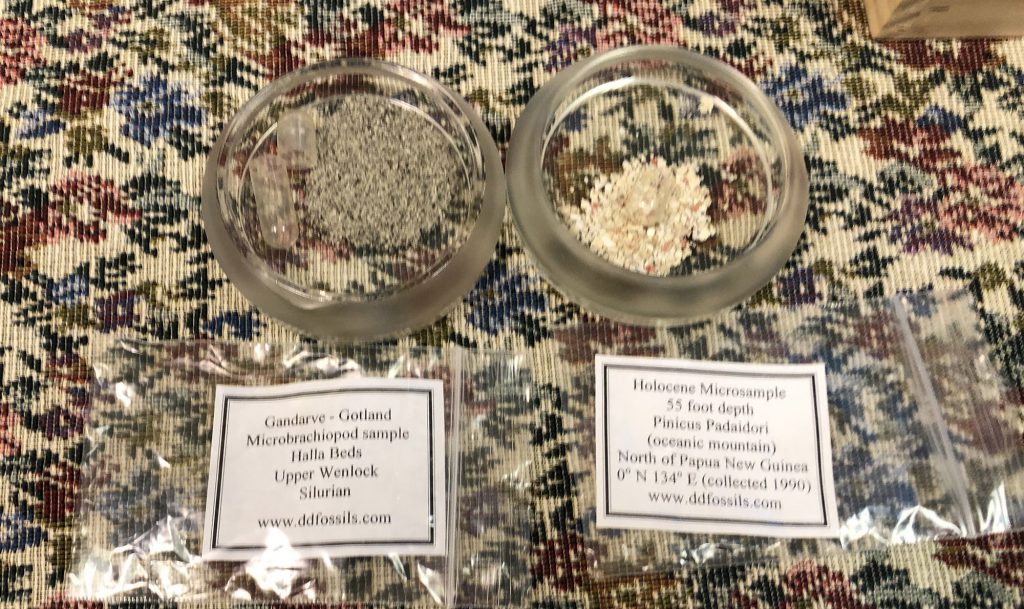
This is our latest batch of microfossils, collected by enthusiasts from beaches and rock formations around the world.
We poured the sample vials and capsules into a glass dish and viewed them at around 15x magnification.
The different “sands” are made up of small rocks and microfossils.
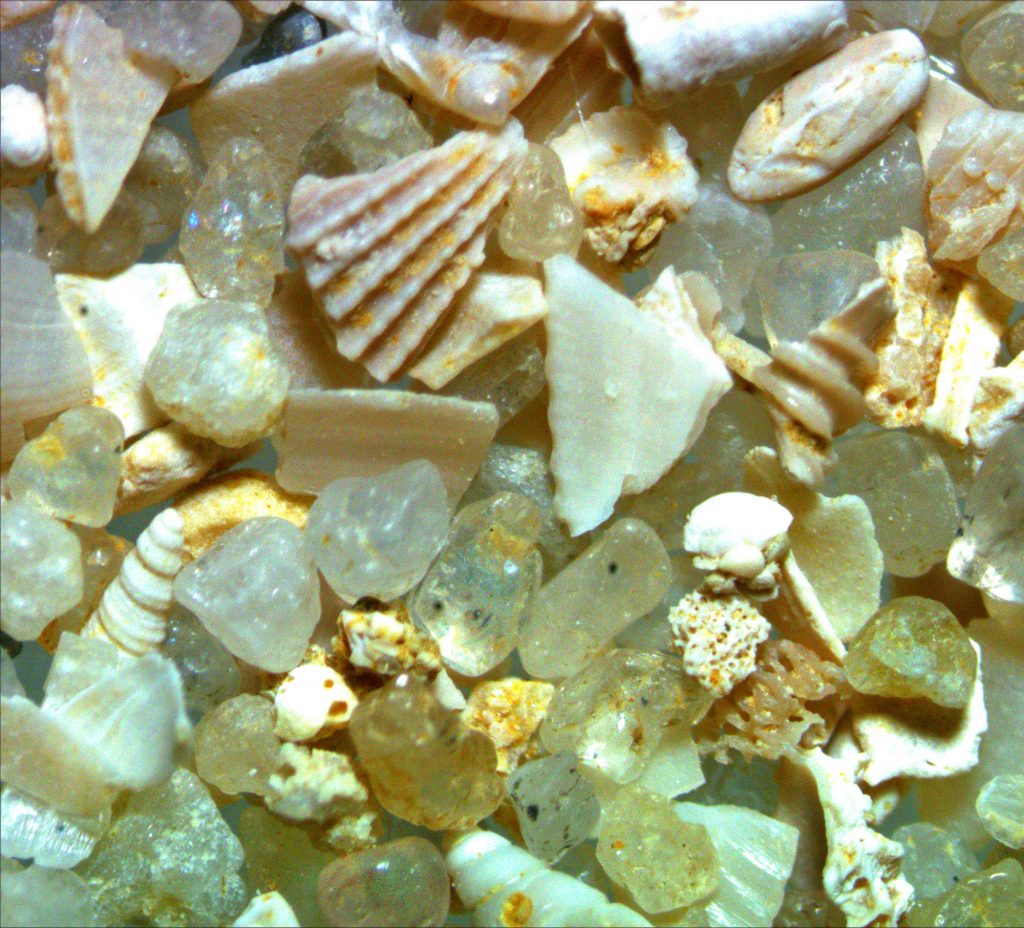
15x
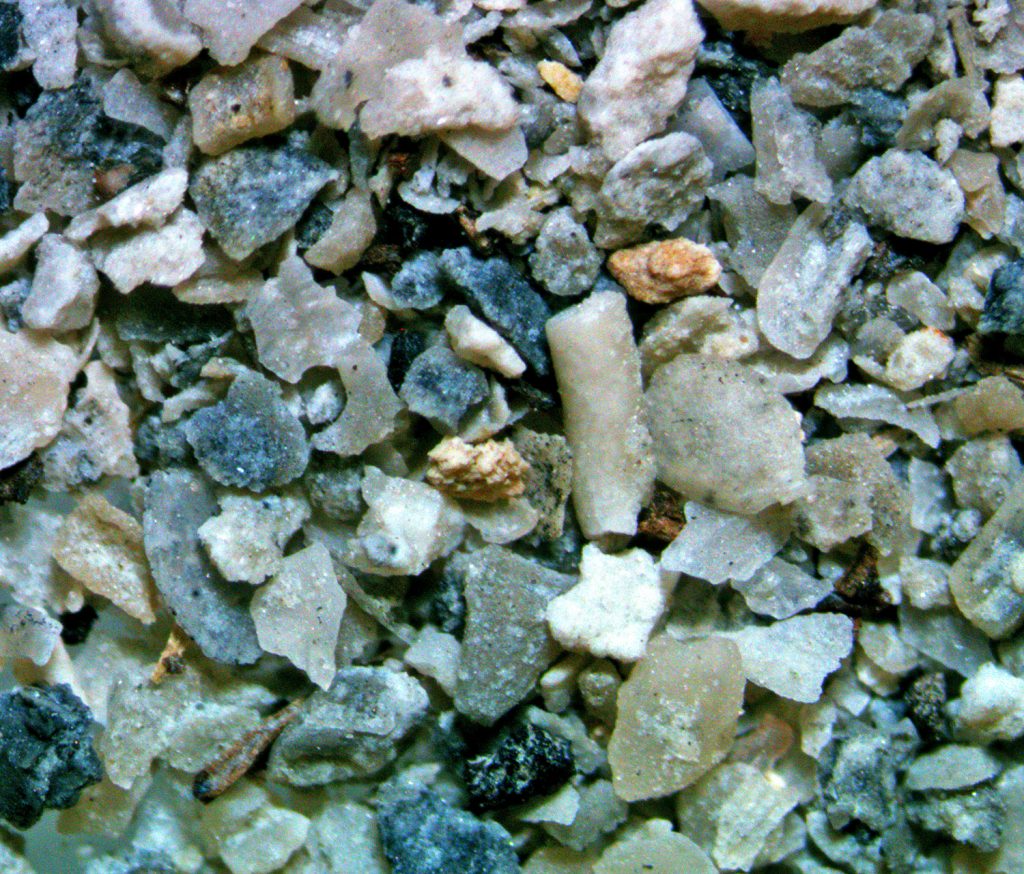
15x
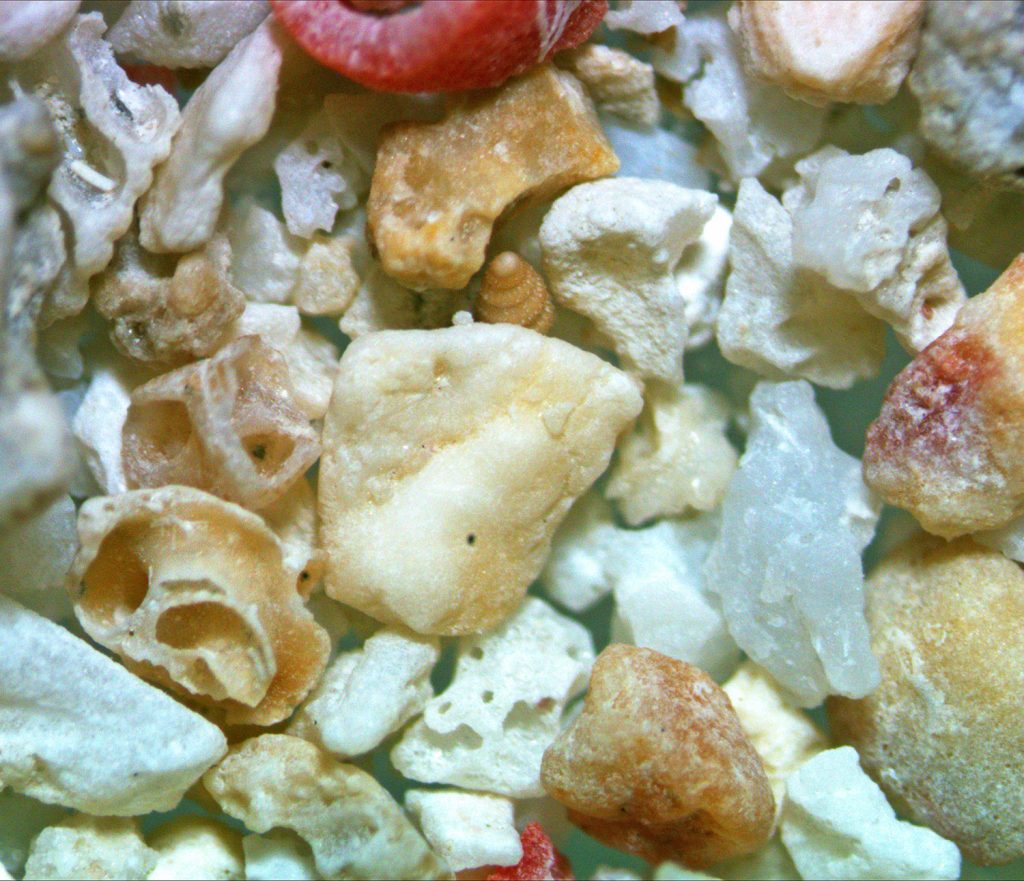
17x

It is not only species that have arisen and gone extinct over time; many land features have originated and then disappeared over time as well.
The Willamette River that winds through the Willamette Valley in Oregon began forming approximately 35 million years ago through movement of continental plates and was only separated from the Pacific Ocean when the Coastal Mountain Range rose approximately 20 million years ago. That means there are marine fossils under layers of river soil.
15,000 years ago, melting glaciers in Montana created the “Missoula Flood” that scoured much of Washington and Oregon, depositing sediment and covering the river trench. Eventually the waters receded, leaving the river we enjoy today.


Crater Lake is the main feature of Oregon’s only national park. As it sounds, it is a lake that began forming in the crater made when the volcano Mount Mazama collapsed 7,700 years ago. This is so recent that the Klamath people have an oral history passed on from individuals who witnessed the collapse.
The geologic stories of lakes and rivers impact the life found within these ecosystems.
The next section introduces river ecosystems, including how they can change over time.

Check your knowledge. Can you:
- Define stratigraphy and explain how layers of rocks can provide information?
- Define geochronology, including what is used to date fossil rocks?
- Describe the types of fossils found in Oregon coastal areas, as well as the history of significant freshwater ecosystems?



